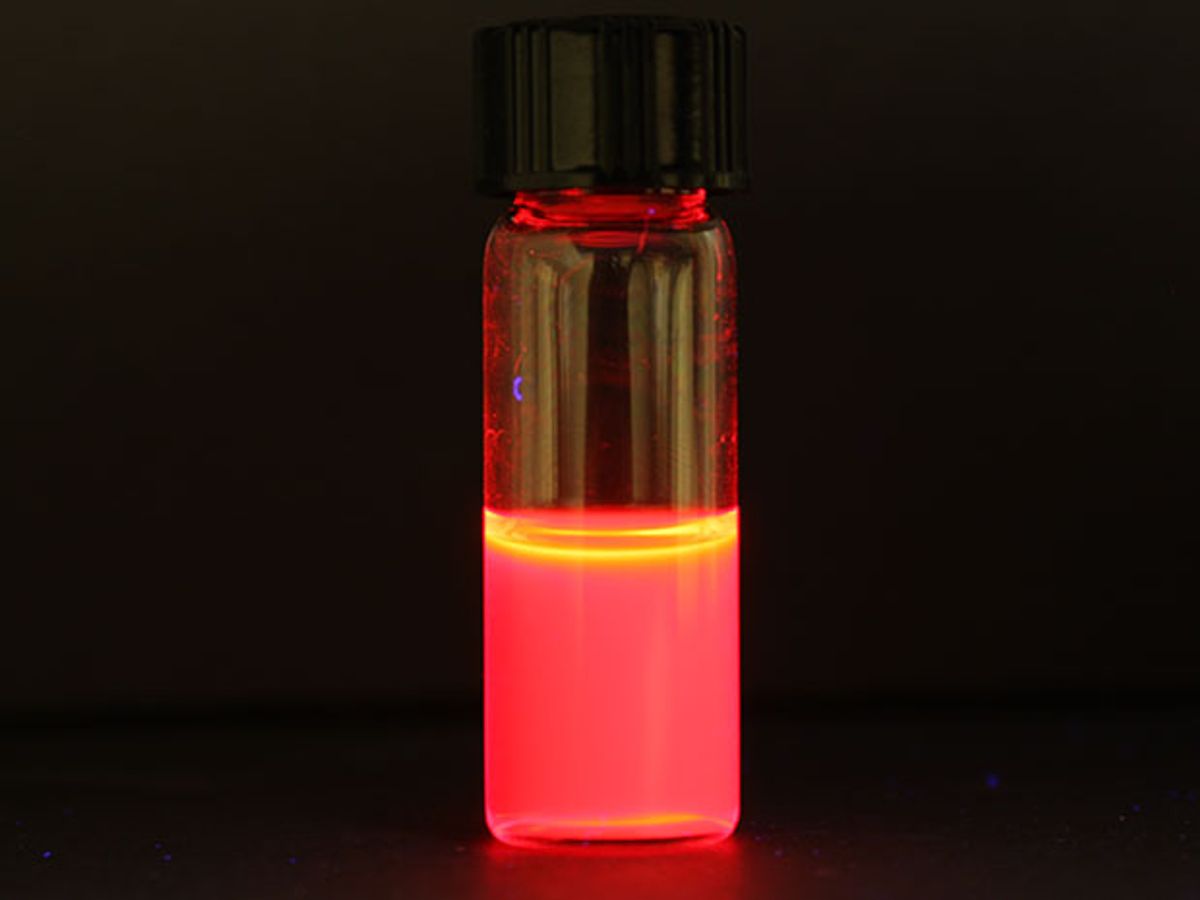
Ted Sargent at the University of Toronto has built a reputation over the years as being a prominent advocate for the use of quantum dots in photovoltaics. Sargent has even penned a piece for IEEE Spectrum covering the topic, and this blog has covered his record breaking efforts at boosting the conversion efficiency of quantum dot-based photovoltaics a few times.
Earlier this year, however, Sargent started to take an interest in the hot material that has the photovoltaics community buzzing: perovskite. Now, he and his research team at the University of Toronto have combined perovskite and quantum dots into a hybrid that they believe could transform LED technology.
In research published in the journal Nature, Sargent’s team describes how they developed a way to embed the quantum dots in the perovskite so that electrons are funneled into the quantum dots, which then convert electricity into light.
“It’s a pretty novel idea to blend together these two optoelectronic materials, both of which are gaining a lot of traction,” said Xiwen Gong, one of the study’s lead authors and a researcher working with in Sargent’s research group, in a press release. “We wanted to take advantage of the benefits of both by combining them seamlessly in a solid-state matrix.”
With the perovskite directing the electrons into the quantum dots, a kind of hyper-efficient LED technology is possible that promises applications in light bulbs and new types of displays.
But to get to this bright future, the researchers had to overcome some pretty tough material engineering obstacles.
“When you try to jam two different crystals together, they often form separate phases without blending smoothly into each other,” said Riccardo Comin, a post-doctoral fellow in the Sargent Group. “We had to design a new strategy to convince these two components to forget about their differences and to rather intermix into forming a unique crystalline entity.”
To get these two crystal materials to play nice with each other, the researchers found a way to connect the atomic ends of the two materials seamlessly by constructing a nano-scale scaffolding ‘shell’ around the quantum dots in a solution. As Zhijun Ning, who contributed to the work while a post-doctoral fellow, explained, they “then grew the perovskite crystal around that shell so the two faces aligned.”
Now that they have managed to build the hybrid material, the researchers will be building an LED device based on it with the aim to beat the record power efficiency for an LED.
Dexter Johnson is a contributing editor at IEEE Spectrum, with a focus on nanotechnology.



